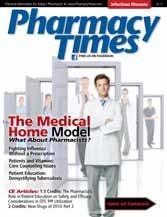Technology News
Making Meds Work Better With Magnets
Researchers at Brown University are working on a novel way to improve drug delivery—with magnets. Using a magnetic pill system they developed, these scientists have demonstrated a method of safely guiding pills to targeted locations in the gastrointestinal tracts of rats.
Applied to humans, the technology could provide a more precise way to deliver and monitor the effects of medications after they have been taken. If proved clinically safe and effective, the researchers see the system being used to improve medication therapy for patients with diseases like cancer and diabetes.
“With this technology you can now tell where the pill is placed, take some blood samples and know exactly if the pill being in this region really enhances the bioavailability of the medicine in the body,” said Edith Mathiowitz, PhD, lead investigator of the study and a professor of medical science at Brown University’s Department of Molecular Pharmacology, Physiology, and Biotechnology.
For the trial, Dr. Mathiowitz used a 1-millimeter-long magnet contained in a gelatin capsule, coupled with a large external magnet designed to steer the capsule from outside the body. Although magnetic pill delivery systems are not new, the Brown researchers are the first to create one that allows the administrator to control the amount of force between the 2 magnets.
In a report published January 17, 2011, in the journal Proceedings of the National Academy of Sciences, Dr. Mathiowitz and colleagues wrote that “this advance ensures both safety and efficacy of magnetic localization during the potential oral administration of any magnetic pill-based delivery system.”
For the purposes of their experiment, the researchers did not place medication inside the capsule; however, that will be a goal of future studies, Dr. Mathiowitz said.
NACDS Wants HITECH Regulation Axed
A component of the Health Information Technology for Economic Clinical Health (HITECH) Act would have a “significant negative impact” on technology systems at retail pharmacies, the National Association of Chain Drug Stores (NACDS) said in January.
The law includes a revision of privacy and security regulations under the Health Insurance Portability and Accountability Act (HIPAA) that would expand accounting requirements for disclosures of sensitive patient information to include even routine, daily disclosures.
Although the requirement is designed to provide patients with more control over their health information, it would have the unintended effect of hampering patient-pharmacist interaction and disrupting routine pharmacy operations, NACDS said.
In a letter issued January 14, 2011, to the House Committee on Oversight and Government Reform, the organization noted that “patients expect their information to be shared” during routine interactions involving “healthcare treatment, payment, and operations,” and that “these interactions occur a million times per day.”
Documenting each instance of disclosure— whether routine or not— would require pharmacies to dramatically increase their capacity for creating and maintaining detailed records.
“If this expansion of the accounting requirement were to be imposed on pharmacies, it would cause chain pharmacies to have to completely replace their existing information technology systems nationwide,” NACDS concluded.
To read the letter, visit http://phrmcyt.ms/ePRMqI.
AJHP Study Probes the Pharmacy Blog Circuit
Anyone who has perused the pharmacy blog circuit can attest to the fact that pharmacy bloggers are an opinionated bunch. A new study, published in the December issue of the American Journal of Health-System Pharmacy (AJHP), aimed to quantify those opinions by taking a close, analytical look at the most active, current blogs written by pharmacists.
For the study “Use of Blogs by Pharmacists,” lead investigator Kevin A. Clauson, PharmD, combed through 117 pharmacy-related blogs to identify those that were active, written in English, and maintained by pharmacists. A total of 44 blogs met these criteria, and Dr. Clauson and colleagues evaluated the most recent 5 posts of each blog based on 6 categories.
These categories included the bloggers’ discussion of practice-based topics, their use of identifying information, whether they used mostly positive or mostly critical language, and their overall degree of professionalism. A cross section of pharmacy practice settings were represented equally among the bloggers.
Nearly all the bloggers declined to provide identifying information— 68.2% were anonymous—and none revealed patient information. Although a majority used positive language to describe their profession, the most common use of critical language was in reference to patients and other health care professionals, according to the report.
Blogs by pharmacists practicing in community settings were “substantially more likely than noncommunity practitioner blogs to use unprofessional and critical language,” the authors wrote. In his own blog, however, Dr. Clauson noted that due to the timing of their study, their analysis did not account for relative newcomers to the pharmacy blogosphere.
“We’re currently working on the best way to create a real-time, curated list of pharmacist blogs that does not violate AJHP copyright. Ideally it will allow for inclusion of all of the blogs created since our study, and removal of ones that have since gone defunct, while being freely accessible to anyone,” he wrote.

